EGYPTOLOGY: Science in Ancient Egypt, Part #3
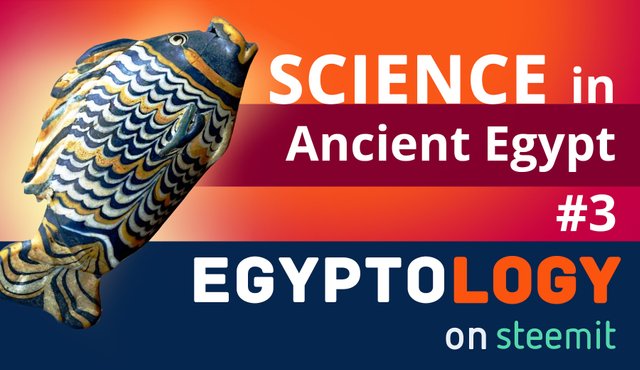
In my two previous posts about science in Ancient Egypt, I gave you a short introduction to Astronomy & Mathematics, and Geography, Geology & Biology. In this article I wanna show you the power of innovation and technology of this advanced ancient culture which will cover in the same time the subjects of Physics and Chemistry and will also give you a more detailed view into the work of archaeologists and how they come to their conclusions about the historical cultural development in past times.
Archaeological Sources
Egyptologists today divide the ancient egyptian past into several periods as you can see in the picture below.

Scholars often refer to the intermediate periods as the "dark ages", because we as archaeologists have to deal with a lack of reliable historical sources. A few years ago there was a common opinion that in those times the creativity of people decreased. Theories have been put forward that, for example, the pottery was less "beautiful" because people had been busy surviving the crises. As we know now, the opposite was often the case (but not in general). We cannot distinguish between the ancient periods by simply judging about the artistic quality of the remains we found. There is one important phrase we use now which is the basis of our archaeological evaluation: The absence of evidence is not the evidence of absence. In other words – even if we do not find an artistically shaped jar dating back to one of the intermediate periods, we cannot conclude that there haven't been there such vessels at all.
The Ancient Egyptians were proud people. They accumulated an advanced knowledge over the millennia in their collective mind and they knew that this was one of the keys to their success. Their "resurrection" after social downfalls in the intermediate periods, was only possible by a strong solution-oriented thinking. Creativity and a progressive mind are necessary to "restart" on a higher level after the chaos. In my opinion, the Ancient Egyptians were no exception to that.
Innovation, technology and the progressive principle of "trial and error"

The obelisk is showing marks of stonework that "shaped" the form of the object directly out of the granite on the ground. But due to static problems, it broke suddenly and could not be used in the determined way. So it was left abandoned there until archaeologists rediscovered it. This quite rare example was subject to many archaeological experiments that tried to find out which stoneworking technique the Ancient Egyptians used. Until today there is no satisfying theory of how it was really possible with the assumed tools they used: was it copper chisels or other, much harder stones? It is still an enigma even to Egyptologists and will be studied further with our progressing knowledge.
Pyro-Technology
When you hear the term "pyro-technology" you probably think first of something explosive, right? ;) But in a scientific context pyro-technology refers to the burning process of a product or produced material. In the following paragraph, I will describe to you a few technological innovations of the Ancient Egyptians.
Pottery and ceramics
Pottery, as whole vessels or plates or even as sherds, is the most common finding in Egypt. When you arrive at an archaeological site the first you will probably see is a huge amount of pottery, especially in areas of human settlement. The site "Umm al-Qa'ab" for instance is named after its appearance - it stands for the arabic phrase "Mother of the Pots". It is a huge area almost completely covered with broken pottery dating back to the predynastic time, which is around 3200 BCE. And it is not an exception. There are numerous places like this all over Egypt. As a beginner in archaeology, you will feel some kind of "respect" of not trambling on the ground in order to avoid breaking more of the precious sherds from where you know – they are proofs of thousands of years old history. You take a sherd in your hand and can't believe it - this piece of a bowl was once touched by an Ancient Egyptian and you are touching it again now. At that moment you feel that unimaginable time span shrinking to a second...
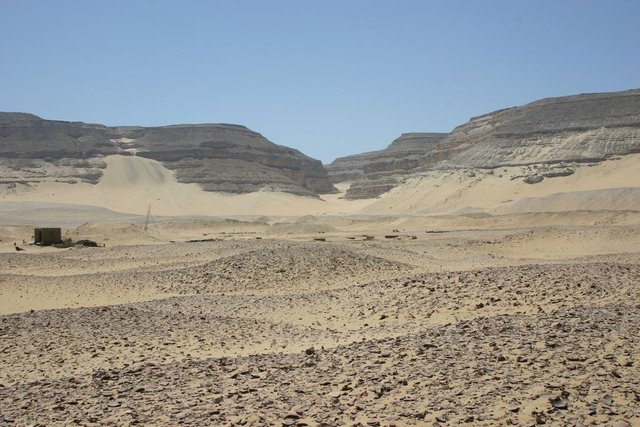
Picture license: Public Domain Source
You could think now – oh pottery...how boring. I admit, especially those sherds without any decoration are in general not sooo interesting, but from a scientific standpoint we mostly look for sherds with (parts of) a rim or a bottom. They can be counted and analysed in quantity, but also in quality. But the most important issue of ancient pottery is their function as a marker for dating. The age of the site, the settlement or tomb can be determined quite precisely. For this we have several methods:
The Ancient Egyptians used different types of clay and almost every village had their own, specific sort of "temper". They used rests of crops (chaff) to mix it with the clay in order to make it more robust after burning or drying. And this kind of technology progressed over the millennia in a clearly visible way and leave to us archaeologists a huge collection of time witnesses.
Today we can examine the material with (as an example) the so-called thermoluminescence analysis. This is a difficult procedure that measures the energy in the crystalline structure of burned material like pottery. It is such a complex area of research that there were even excellence cluster topoi built in "archeoceramology".
Beside this we can analyse the contains of chaff. Those plant remains give often a great insight even into agricultural issues.

Picture credit: Public Domain Source
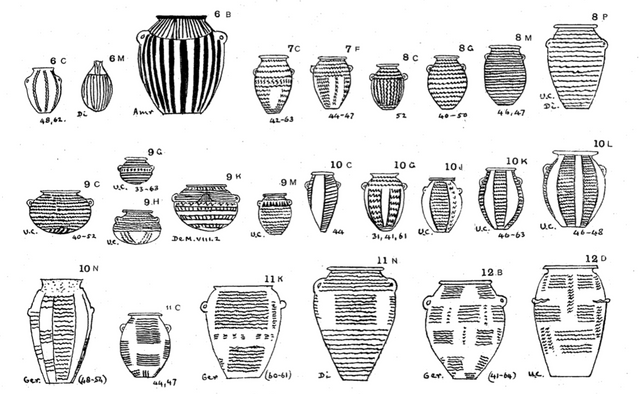
Picture license: Public Domain Source
Glass Production
Another very interesting field of research is the glass production in Ancient Egypt. You probably don't know that they were able to create vessels and decorative objects on a very advanced level already in the earliest times?
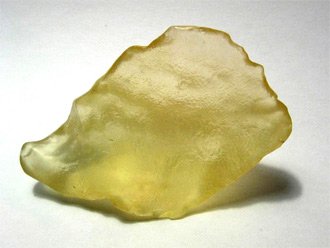
Picture credit: H. Raab Source
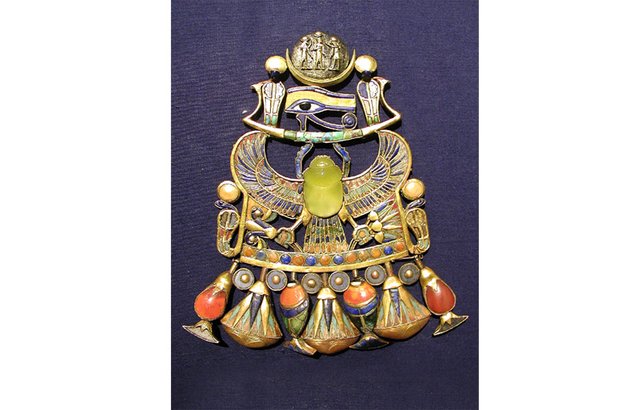
Picture credit: Jon Bodsworth, Public Domain Source
So the procedure of artificial glass seems quite more difficult when you consider the tools and machines we need today. Glass, in general, is made of quartz sand that is molten in a high temperature of around 1700°C. By adding a flux you can decrease and therefore control the temperature which was necessary in ancient times when nobody knew how hot the oven really was. Additional calcium was put to the molten mixture to stabilize the final product. Today we know that this procedure strengthened the molecular network of the glass.
It is unknown in which way the glass production technology was imported into Ancient Egypt, but scholars assume it came from Ancient Syria or Palestine at around 1500 BCE as these areas were known for trading raw glass chunks. Pliny the Elder wrote in his "Historia naturalis" that the sodium bicarbonate that was used in the burning/melting process as a flux came from the egyptian "Wadi Natrun", a dry desert valley with a huge natural deposit of this material.
To create colourful glass in different shades the Ancient Egyptians used several minerals and metal oxides, such as Mangan for producing glass in purple colour to mimic the gemstone Amethyst which was very rare in Egypt. Beside the emulation of gemstones for further processing into jewellery, glass was used for vessels, bowls, vases and even for decoration. Below you can see a small collection of Ancient Egyptian glass artworks.
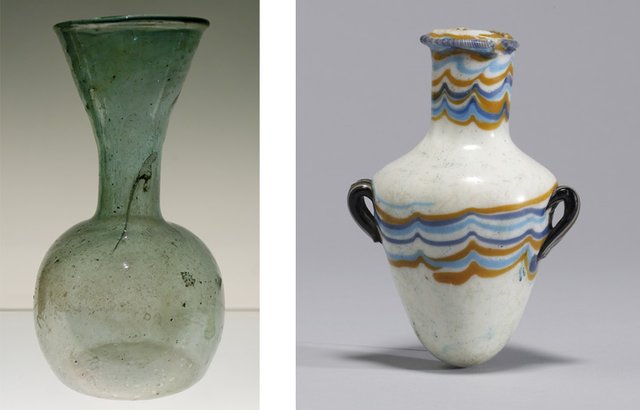
Right: A white vase with coloured elements, Picture Credit: Public Domain Source
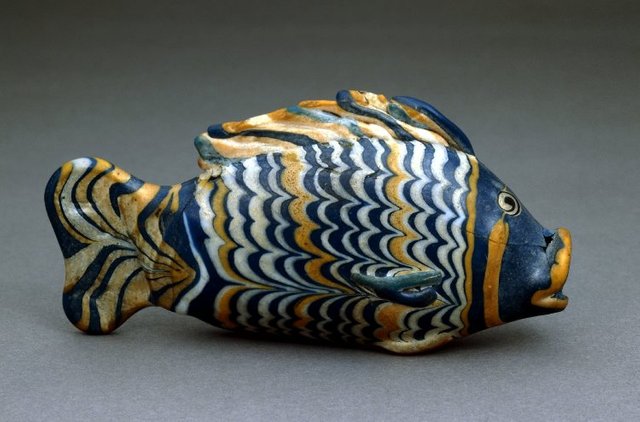
Faience
Regarding faience, I refer to one of my previous articles in which I only scratched the surface of this fascinating technology that continued the development of glass production in a very advanced way at around the 10th century BCE. And "scratching the surface" is a good keyword to emphasize the most apparent characteristic: the smooth, shiny surface of faience in its many shades of blue was determined to mimic the colour of turquoise which was a rare and therefore expensive gemstone in Ancient Egypt. It was – from a modern viewpoint – a difficult creation process. But the Egyptians refined this technology more and more. And here is how it worked:
The basic substance was a normal ceramic material made of quartz sand, metal oxide and calcite and the object was produced like normal pottery. But the trick was now to create a glaze that was sparkling like a mirror. After burning the basic object the Ancient Egyptians mixed fine powdered sandstone, chalk, soda and copper oxide together with water and then dipped or covered the object with that fluid. The last step was a second burning with a lower temperature at around 600 °C. The chemical reaction of the ingredients with the temperature caused that amazing blue colour and the Ancient Egyptians tested their mixture in different proportions of the ingredients to create faiences in shades from blue to turquoise.

Picture credit: Public Domain Source
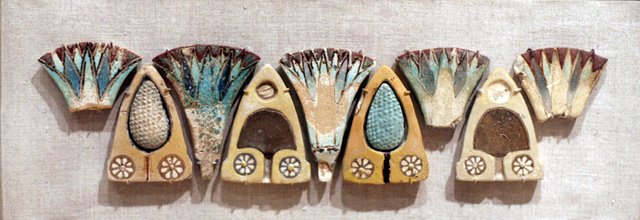
Picture credit: Public Domain Source
Conclusion
Although this is still a short summary of the fascinating technologies in Ancient Egypt I apologize for this long article to read. ;) Please keep in mind that there are many more highly interesting aspects of technology to discuss but this would go beyond the scope of this. However, feel free to ask any questions in the comment section below.
In one of my next articles, I will cover a subject that takes a great space in the scientific research especially of the German Egyptology: writing & language. So follow me on this blog for more interesting facts about Ancient Egypt!
Sources and further reading:
• Barras, Heather, Archaeological Heroes: An evaluation of Flinders Petrie’s contribution to Archaeology, in: The Post Hole Issue 49, pp. 1–6. ONLINE
• Clayton, Patrick A., Spencer, Leonard James, Silica Glass from the Libyan Desert, in: Mineralogical Magazine 23 (1934), No. 144, pp. 501–508. ONLINE
• Flinders Petrie Biography: ONLINE
• Glass production (german article): https://de.wikipedia.org/wiki/Glas
• Petrie, William Flinders, A Corpus of Prehistoric Pottery and Palettes, London 1917. PDF-Link
• Sequence Dating: ONLINE
• Thermoluminescence Dating: ONLINE
• Umm al-Qa'ab: Shaw, Ian, The Oxford History of Ancient Egypt, Oxford 2000, p. 67.
• Zimmermann, Martin, Glasherstellung im Frühmittelalter. Zusammenfassung der Dissertation: https://journals.ub.uni-heidelberg.de/index.php/arch-inf/article/viewFile/26241/19957
Licenses of the pictures are CC BY-SA 3.0 or CC BY-SA 4.0 with the corresponding author credited appropriately below the picture. Image used in the editorial picture by British Museum EA55193.

If you liked this article, please follow me on my blog @laylahsophia. I am a German Egyptologist writing about ancient and contemporary Egypt, history of science, philosophy and life.

You received a 10.0% upvote since you are not yet a member of geopolis and wrote in the category of "archaeology".
To read more about us and what we do, click here.
https://steemit.com/geopolis/@geopolis/geopolis-the-community-for-global-sciences-update-4
Congratulations! Your post has been selected as a daily Steemit truffle! It is listed on rank 3 of all contributions awarded today. You can find the TOP DAILY TRUFFLE PICKS HERE.
I upvoted your contribution because to my mind your post is at least 31 SBD worth and should receive 149 votes. It's now up to the lovely Steemit community to make this come true.
I am
TrufflePig, an Artificial Intelligence Bot that helps minnows and content curators using Machine Learning. If you are curious how I select content, you can find an explanation here!Have a nice day and sincerely yours,

TrufflePigI went back through to read all the parts of this series. I guess it never occurred to me to think about the difference between our modern quest for knowledge being motivated by desire to collect knowledge, and the ancient Egyptian's motivation coming from a need to problem solve. How fortunate are we to live in a time when we can collect knowledge for the sake of collecting it. What a privilege!
Maybe I must describe it a bit detailed: today we have various reasons to collect knowledge. One is the knowledge that we gain because of institutional research programs that "gather" similar interests such as graduate schools with a certain scientific focus. The funding of those organisations is often directly connected with publication. So it is often just "piled up" knowledge without a direct practical value. Hopefully, we'll benefit later from it. On the other hand, especially in medicine, we try to "find a solution" by testing a cure for cancer. But at the same time, medical research is also done by huge pharmaceutical companies to earn more profit. This was basically not the mentality of the ancient cultures...
Hi @laylahsophia!
Your post was upvoted by utopian.io in cooperation with steemstem - supporting knowledge, innovation and technological advancement on the Steem Blockchain.
Contribute to Open Source with utopian.io
Learn how to contribute on our website and join the new open source economy.
Want to chat? Join the Utopian Community on Discord https://discord.gg/h52nFrV
I did like this article and I'm definitely following you for more. Awesome piece.
Thank you! :)
You are welcome
Congratulations @laylahsophia! You have completed some achievement on Steemit and have been rewarded with new badge(s) :
Click on the badge to view your Board of Honor.
If you no longer want to receive notifications, reply to this comment with the word
STOPDo not miss the last post from @steemitboard!
Participate in the SteemitBoard World Cup Contest!
Collect World Cup badges and win free SBD
Support the Gold Sponsors of the contest: @good-karma and @lukestokes
Thanks for this fascinating post.
Egypt was such an interesting civilization.
Great work!
liebe @laylahsophia, dein power down bedeutet hoffentlich nicht, das du steemit verlässt. ich würde das sehr bedauern! deine beiträge sind allesamt höchst interessant und qualitativ vom feinsten. mit lg
Hey @pawos. Nein, keinesfalls, aber ich muss finanziell etwas flexibler sein in den nächsten Monaten. Ich verlasse steemit ganz sicher nicht. Im Gegenteil - ich bereite gerade einen Teil meiner Posts in deutsch vor!
:)
puh, das freut mich ungemein! sei nur gefasst darauf, das die deutschen posts nicht ganz so hoch bewertet sind, da steemstem mehr auf in englisch verfasste artikel votet. es gibt aber auch ein #de-stem tag, den ich dir zu benutzen empfehle. wie auch immer, ich bleibe dir treu - nun erst recht :-) lg
Ich weiß, dass die de-Community noch klein ist. Und der payout ist mir dabei auch nicht so wichtig, sondern vielmehr, dass ich echte Follower bekomme, die wirklich an dem interessiert sind, was ich schreibe. Mich nervt es sooo oft, wenn ich sehe, dass zwar meine Followerzahl steigt, dabei aber 9 von 10 Spammer und Resteem-Bots sind. Ich denke, ich muss es meinen deutschen Followern einfach ein bißchen leichter machen, zumal Deutsch ja meine Muttersprache ist. Da ich meine steemstem-Artikel aber immer direkt in Englisch schreibe, muss ich die nun zurück-übersetzen, was ein bißchen Zeit braucht.
DANKE für deine Treue! <3
That's an interesting question that I sometimes ponder: whether hard times means good art, and rich times means decadent art. And whether the opposite is true for the sciences: whether riches means flourishing of the sciences.
For instance I know that in the former Soviet Union, art was great. Movies, novels, music, everything flourishes, due to the oppression. But now good art is scarce.
Also, ancient Greece flourished both scientifically and artistically when it was a 'superpower', whereas now they may as well be a third world country.
I must say the glass artifacts and the faience are most impressive. Really masterful. I wouldn't be able to tell them apart from modern ones.
Definitely copper chisels cannot shape granite if we only consider the hardness scale of Mohs - There is an obvious lack of scientific approach when it comes this topic.. I don't know what your standpoint is on this, but if we simply extrapolated the implication this brings to the table of Egyptology we would drastically change our preconceived ideas about their way of being. It seems a lot of the facts that we have are overlooked and their implications forgotten in the void. To carve granite requires somethings of the same hardness or higher which is either diamond or silicon carbide nowadays. Right there the mystery thickens, how in the first place do you get diamond or harder material? This already implies vast mining enterprises.. For me, the profiling of these ancient people is far from being properly understood until those facts are taken into account in our interpretations.